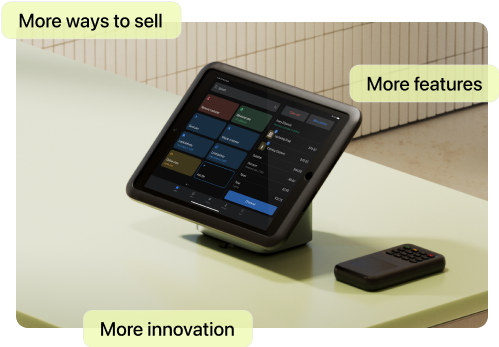When Joanna Griffiths launched Knix in 2013, she wasn’t just creating leak-proof underwear—she was dismantling decades of marketing tropes in the women’s intimate apparel industry. From the start, Knix challenged how female consumers are seen and spoken to.
“One of the things I’m the most proud of is that we really changed the way women were marketed in advertising,” Joanna reflects. “It was a complete departure from what you would see in intimate apparel ads.”
Joanna’s journey began with research during her MBA, exploring online forums and conducting intimate conversations with women to understand their real experiences. What she discovered was staggering: one in three women experience leaks when laughing, sneezing, coughing, or exercising—and 80% experience leaks during their periods. Yet the predominantly male-run industry was designing products “to be worn for 15 minutes and then taken off by someone,” Joanna says. She set out to do the opposite. “We’re making products to be worn for 15 hours and really thoughtfully designing them for real life.”

Rather than accept industry norms, Joanna spent a year exploring not just the physical challenges women face, but the emotional and psychological impact of those challenges. Leaks, she learned, impacted confidence, sports participation, employment, and relationships. This insight became the foundation of Knix.

How Knix changed the way women were marketed
1. Break the mold: real bodies, real stories
From day one, Knix took a radically different approach to marketing. Traditional intimate apparel brands featured airbrushed models in perfectly lit studios. Joanna instead made a bold decision. “In 2013, we were the first brand to showcase our products on every size that we make,” she says.
“When we tried the product on people, I was like, Wow, it looks amazing on everyone.” Having been different sizes throughout her life, she knew the frustration of not seeing her body type represented online. “Why don’t we just show this to people?” she asked.
Showing customers someone with a similar body type wearing the product helped them make informed decisions about sizing. More importantly, it celebrated diverse body types in an industry that had long promoted unrealistic standards. Effective marketing addresses genuine customer frustrations rather than following industry trends.
Knix features real customers in its campaigns, showcasing authentic experiences rather than fantasy scenarios.
2. Showcase the innovation behind the marketing
Knix’s ability to market authentically was made possible by behind-the-scenes innovation. Joanna’s team tests each of its products on every size they manufacture. “In the industry it’s standard to fit on a medium and maybe one other size—or a 34C and one other size,” she explains. “But we fit on every single size that we make and we wear-test on every single size.”
That kind of obsession with fit and function allowed the team to market truthfully. You can’t fake genuine customer satisfaction, and sustainable marketing strategies must be built on products that truly deliver. The technical design team at Knix fits products three days a week, back-to-back, from 9-to-5—and Joanna still participates in every test. Taking a hands-on approach ensures that marketing promises align with product reality. Many brands overlook this crucial element regardless of what they’re selling.
3. Listen, then pivot
When Knix launched its crowdfunding campaign, the feedback started immediately. Within 24 hours, Joanna heard from women asking whether the product worked for heavy periods, spotting, or excessive sweating—uses the brand hadn’t explicitly mentioned.
Rather than dismissing this feedback, Joanna took the bold step of pulling down the campaign video that took two years to make, reshooting it, and changing the messaging. “The answers are in the comments,” she says. It’s a simple idea, but one that many brands overlook: Customers will tell you exactly what they need—if you’re listening.
4. Let authentic content lead
Knix’s consistent focus on real bodies and real problems created a ripple effect. Other brands began shifting the way they spoke to women, recognizing that authenticity resonated more than aspiration.
This shift didn’t happen overnight. Joanna admits the first three years of business were extremely challenging, with the team consisting of just two to three people. She credits the brand’s success to consistency—staying the course even when results were slow. “I think people assume they’re gonna launch and everything’s just gonna click and it’s gonna work, and there’s like a silver bullet—but there honestly isn’t.”
Over time, every campaign, product page, and Instagram post reinforced the same message: Real products for real women living real lives. This coherent brand narrative, backed by genuine product innovation, eventually created a movement that blew competitors out of the water.
5. Expand the mission
As Knix has grown, it’s continued pushing boundaries. Recent campaigns featured female founders in swimwear, celebrating entrepreneurship alongside body positivity. “I think it’s incredibly important to bring others along with you,” Joanna says. “To lend your voice and platform to not just elevate your own brand, but also lift others up."
The company’s physical retail stores extended this mission. Staff aren’t just salespeople—they’re “real brand ambassadors who love the mission and love the brand and want to help people,” Joanna shares. The result is a consistent brand experience, both online and off.
6. Don’t let resistance stop you
Joanna faced plenty of resistance when she pitched Knix in the early days: “I was told what I think so many female entrepreneurs are told—that my idea was niche, that it would make a cute lifestyle business, that it wasn’t venture-backable.” After 200 rejections, Joanna stopped fundraising and focused on building a profitable business instead.
This experience taught her that sometimes the best response to industry skepticism is results. When she eventually raised money successfully, she did it from a position of strength.

Today, Knix’s influence on marketing to women extends far beyond intimate apparel. Its approach—showing real bodies, addressing real needs, and leading with authenticity—has become a blueprint for how brands can build community and trust. “We just focused on building a great business,” Joanna says. “That was what mattered to me.”
Sometimes, the most powerful marketing strategy isn’t about chasing new tactics. It’s about fundamentally rethinking how you see and speak to your customers. In an age of increasing consumer skepticism, authenticity isn’t just good marketing—it’s essential to building a business that lasts.
Watch Joanna’s full interview on the Shopify Masters YouTube channel to learn how understanding your customers can help you create better products and more honest marketing.







